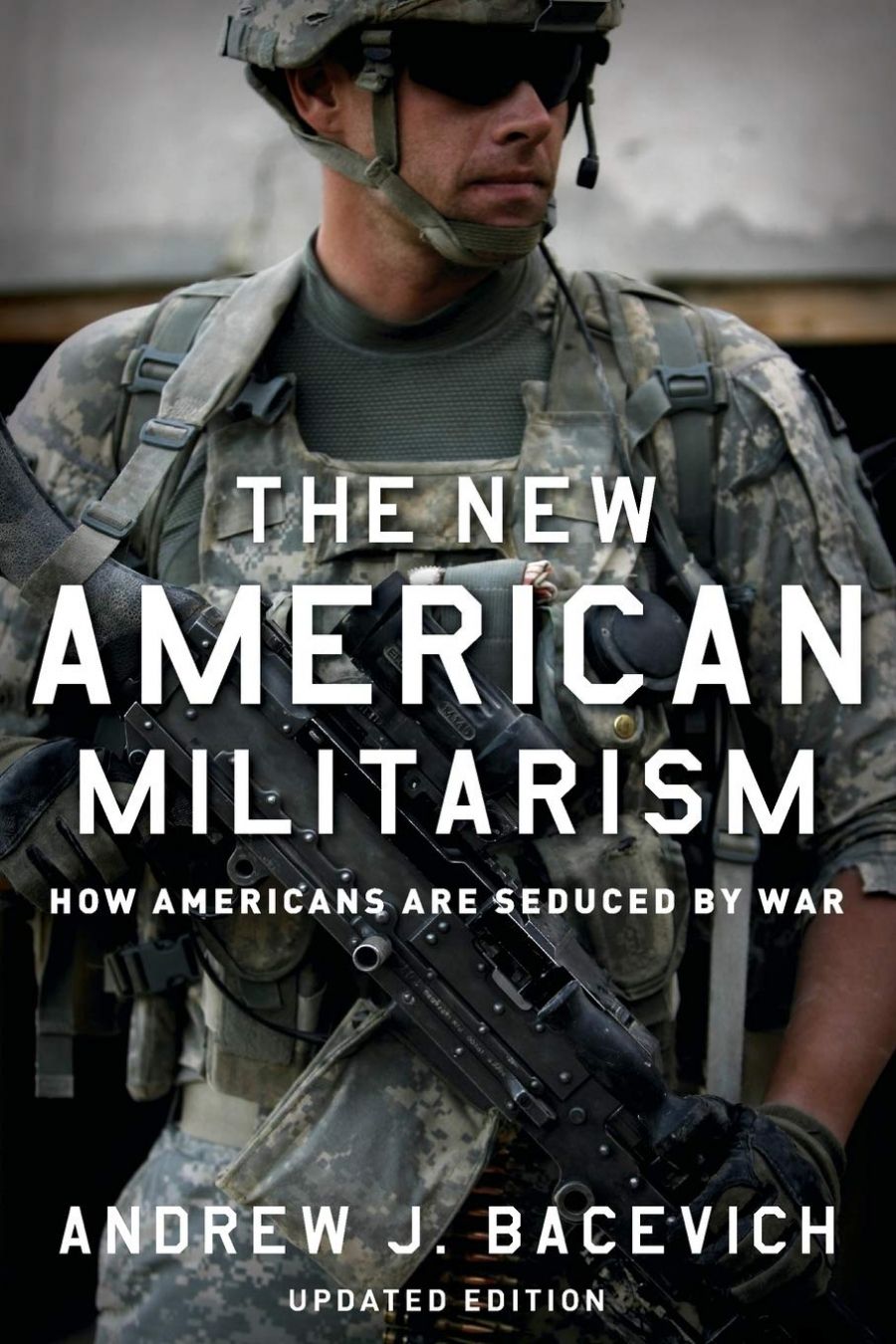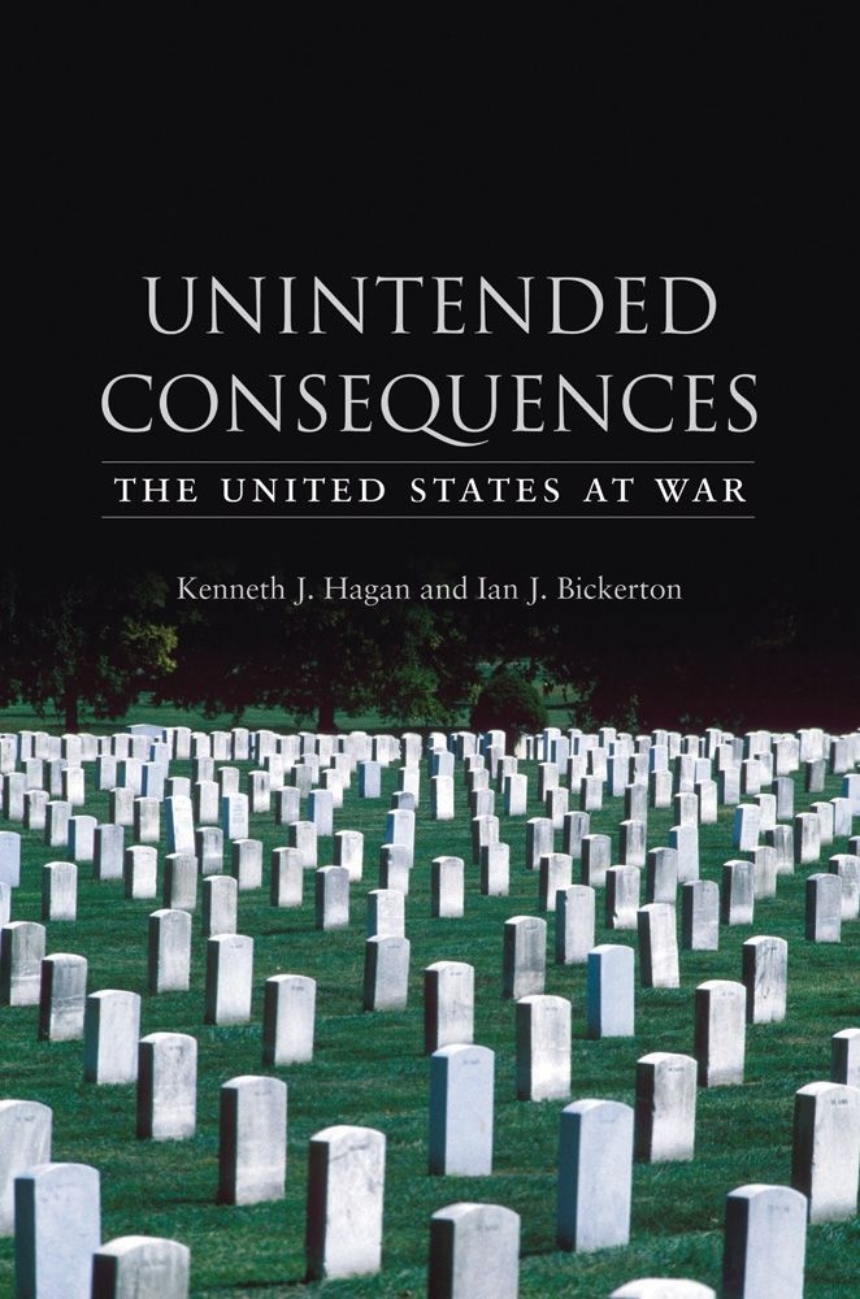
- Free Article: No
- Contents Category: War
- Review Article: Yes
- Article Title: Some record
- Online Only: No
- Custom Highlight Text:
Andrew Bacevich is a former West Point graduate, a principled man on the conservative side of politics who considered it wrong for wealthy citizens to leave the fighting of America’s wars to the poor and disadvantaged. He had fought in Vietnam, and his son, a newly commissioned second lieutenant in the United States Army, had volunteered for duty in Iraq. Just before Bacevich Sr was to attend the Sydney Writers’ Festival in June 2007, he received word that his son had been killed in Iraq. He cancelled his engagement in Sydney, and sent a poignant letter explaining his absence. It is a great pity that he was unable to come. The book that Bacevich was due to speak about is one of the most trenchant accounts I have read about contemporary American military culture. It should give any thinking Australian pause about the growing influence of American doctrine, strategy, training, equipment and choice of weapons over the Australian Defence Force.
- Book 1 Title: The New American Militarism
- Book 1 Subtitle: How Americans are seduced by war
- Book 1 Biblio: Oxford University Press, $33.95 pb, 278 pp
- Book 2 Title: Unintended Consequences
- Book 2 Subtitle: The United States at war
- Book 2 Biblio: Reaktion Books, $57.95 pb, 223 pp
- Book 2 Cover Small (400 x 600):

Bacevich asserts that modern American militarism began in the late 1960s as a reaction to the humiliating defeat in Vietnam. It was driven by military officers intent on rehabilitating their profession, intellectuals fearing that the loss of confidence at home was paving the way for the triumph of totalitarianism abroad, religious leaders dismayed by the collapse of moral values, strategists stung by the worthlessness of their war schemes, politicians on the make, and purveyors of pop culture looking for a buck. Bacevich could have added, but doesn’t, that it was also driven by an avaricious weapons manufacturing industry, the largest and most technically advanced in the world. During the 1970s and 1980s, America’s military rebirth led to a massive increase in military expenditure and to an appreciable boost in the status of military institutions and soldiers. The Pentagon officially assigned to itself the mission of ‘shaping’ the international environment through global dominance and an increased propensity to use force. A new aesthetic of war was conceived in which primitive barbarism gave way to surgical strikes by aircraft delivering smart weapons reinforced on the ground by fast-moving light infantry. It became the function of soldiers to be exemplars, wrapped in a culture of honour and morality. It became the duty of politicians to pay them homage. ‘Failing to support the troops’ was a sin punishable by political banishment.
The collapse of the Soviet empire in 1989 could have stopped the Pentagon in its tracks: whom had the Pentagon, with its massive and revitalised strength, left to fight? But, as if prompted by Washington, Saddam Hussein decided to invade Kuwait, and Operation Desert Storm was conceived to repel him. Unlike the fiasco in Vietnam, the American military was now carefully scripted, tightly controlled to exert overwhelming force to achieve specific objectives, and with a clear exit strategy.
The inevitable victory against a demoralised Iraqi Army occurred, and the American military’s prestige was restored. But the officers’ corps was not allowed to rest on its laurels. From Desert Storm until November 2001, it was cajoled into a plethora of new interventions prompted by ethnic cleansing, genocide, failed states, civil war and terror. Those who did the cajoling, says Bacevich, were an unholy mixture of right-wing intellectuals, Hollywood moguls and born-again Christians. Norman Podhoretz, an aggressive New York intellectual, was the leading architect of the neo-right. He believed the United States to be the one true universal church, in which the declaration of 1776 was sacred scripture, the District of Colombia the Holy See, and the occupant of the Oval Office the supreme pontiff. To him, international evil was real. It could only be deterred by armed force, not by diplomacy or persuasion, and the United States military had a mission to stop it. Podhoretz was followed by a cadre of neo-conservatives, including Condoleeza Rice, Donald Rumsfeld, Dick Cheney, Richard Armitage and Paul Wolfowitz – the self-styled Vulcans – who so persuasively influenced the foreign policies of George W. Bush.
Bacevich points out the changing nature of American evangelical fundamentalism. For the first half of the twentieth century, evangelicals had been mainly moralistic Congregationals and Unitarians, who regarded the army, with its hard drinking and swearing, as sinful. But after the Vietnam débâcle, a pro-military attitude supplanted them. Modelled on the earlier preaching style of Billy Graham, a new breed encouraged patriotism and support for the military. It included Jerry Falwell, founder of the Moral Majority in 1979, and such dubious spruikers as Jim Bakker, Pat Robertson and James Robison. Since 100 million out of 290 million Americans believe in the literal truth of the Bible, Robertson’s boast in 1980 that the Christian right had enough votes to run the country may not have been an exaggeration.
In his seventh chapter, ‘Blood for Oil’, Bacevich constructs a thesis about where all this new militarism is leading. A popular American point of view, he asserts, is that war has always been thrust on America. World War I was started by Germany, World War II by Japan, and World War III (the Cold War) by the Soviet Union. But we are now in World War IV. For Bacevich, the common American view – that it was started by Osama bin Laden, Al Qaeda, Saddam Hussein and his Baathist thugs, terrorists and radical Islamists, all leading to the 9/11 attack on the Twin Towers – is wrong. It is a war whose fuse was lit by Washington as far back as 1944, when President Roosevelt guaranteed military protection to King Ibn Saud of Saudi Arabia in exchange for cheap Saudi oil, for the purpose of preserving the American way of life. From this developed Washington’s ambition to control the whole of the Middle East.
Here lay the driving force behind American actions in what became World War IV: not preventing the spread of weapons of mass destruction; not stemming the spread of terror; certainly not liberating oppressed peoples or advancing the cause of women’s rights. The prize was mastery over a region that leading members of the American foreign policy élite, of whatever political persuasion, had concluded to be critically important to the wellbeing of the United States. As quoted to Greg Jaffe in the Wall Street Journal of 26 May 2007, Bacevich said: ‘When you use force, the unintended consequences are so large and the surprises so enormous that it really reaffirms the ancient wisdom to which we once adhered – namely, to see force as something to be used only as a last resort’.
The surprise, indeed the folly, of generations of Americans, is that the ancient wisdom has indeed been forgotten, the lessons unlearned. It is in this context that Kenneth Hagan and Ian Bickerton’s book Unintended Consequences is highly relevant. The two authors give an informative summary of the causes and course of every American war since 1775, and then analyse their consequences.
The War of Independence severed ties with Great Britain, but it failed to attract the thirteen Canadian colonies in a concerted effort to drive the British out of North America, or to relieve the new United States from the oppressive British Navigation Act. And it led to repressive measures against fifty per cent of the population that remained loyal to Britain.
The war of 1812–14, declared by President Madison with the limited aims of stopping British harassment of American shipping and the arming of Indians, led to far wider consequences. These included genocidal actions by white settlers against Indian tribes, territorial expansion, an expanded American market for slaves, and American attempts to annex Canada. But it did not stop British blockades or impressment of American sailors.
Subscribing to the racist doctrine of ‘manifest destiny’, President Polk declared war against Mexico in 1846 to acquire California and other territories. He succeeded, but in doing so, occupied Mexico City and set a precedent for the later invasion ordered by President Woodrow Wilson in 1916 to capture Pancho Villa. To this day, Mexicans harbour resentment at the shame and humiliation their forebears suffered at the hands of gringo troops.
The scope and dimensions of the consequences of the Civil War (1861–65) were as dreadful as they were unexpected. Not only did they result in one million casualties out of a population of thirty-one million; they also led to the almost total destruction of the southern economy and social structure, the curtailment of civil rights guaranteed in the Constitution (such as habeas corpus and the right to a fair trial), the assassination of an American president and the undying resentment of southern states towards Washington. Slaves were now, in theory, freedmen, but were subject to continuing terror and discrimination in the south.
And so it went. In 1898 President William McKinley regarded himself as a deeply religious and principled man. But the quick war he initiated to expel the Spanish from Cuba and the Philippines led to a terrible ten-year war of attrition in the latter. As in later wars in Vietnam and Iraq, Marines could not distinguish between friend and foe, and slaughtered Filipinos indiscriminately. Just as American recognition of Ho Chi Minh as president of Vietnam would have saved countless lives in 1945, so recognition of Emilio Aguinaldo as president of the Philippines in 1899 would have saved the lives of one million Filipino civilians, 16,000 local soldiers, and more than 4000 Americans.
Provoked by the sinking of three merchantmen in March 1917, President Woodrow Wilson persuaded Congress to enter World War I the next month to stop German submarines from attacking American ships. Without larger or clearer military goals, he nevertheless declared larger principles: the world must be made safe for democracy, and American intervention would lead to a just and lasting peace. But the fourteen points Wilson laid down at Versailles achieved nothing of the sort. With the Russian Revolution, the collapse of the Austro-Hungarian and Ottoman Empires, Europe dissolved into chaos. Exacting obligations imposed on Germany led to the rise of Hitler, fascism and World War II. The acquisition by Japan of German territories in the Pacific led to rising friction with China (and Australia). A ‘Red Scare’ in the United States caused flagrant breaches of civil rights. The unintended consequences of World War II were even worse: a dangerous nuclear stand-off with the Soviet Union that continues with the Russian Federation today; the rise of Communist China; ill-judged Cold War thinking that contributed to the rise of McCarthyism; and bitter regional wars in Korea and Vietnam.
What outcome did the Americans plan through Operation Iraqi Freedom, launched in 2003? Democracy quickly adopted by a grateful Iraqi population; a reduction in international terrorism; stability of Iraqi oil production; and the extension of benevolent American influence in the Middle East. Hagan and Bickerman explain how the Operation has led to unintended and contrary results, including the creation of domestic sectarian violence between Shia and Sunni, the return of Shia and Kurdish militias from neighbouring countries to attack American forces, the destruction of the Iraqi infrastructure, the breakdown of internal governance and order, terrible civilian casualties, and the general decline of the United States’s reputation throughout the world.
Both books are essential reading for Australians who are worried about our own military involvement in Iraq, and about the uncritical alliance between President George W. Bush and Prime Minister John Howard.


Comments powered by CComment